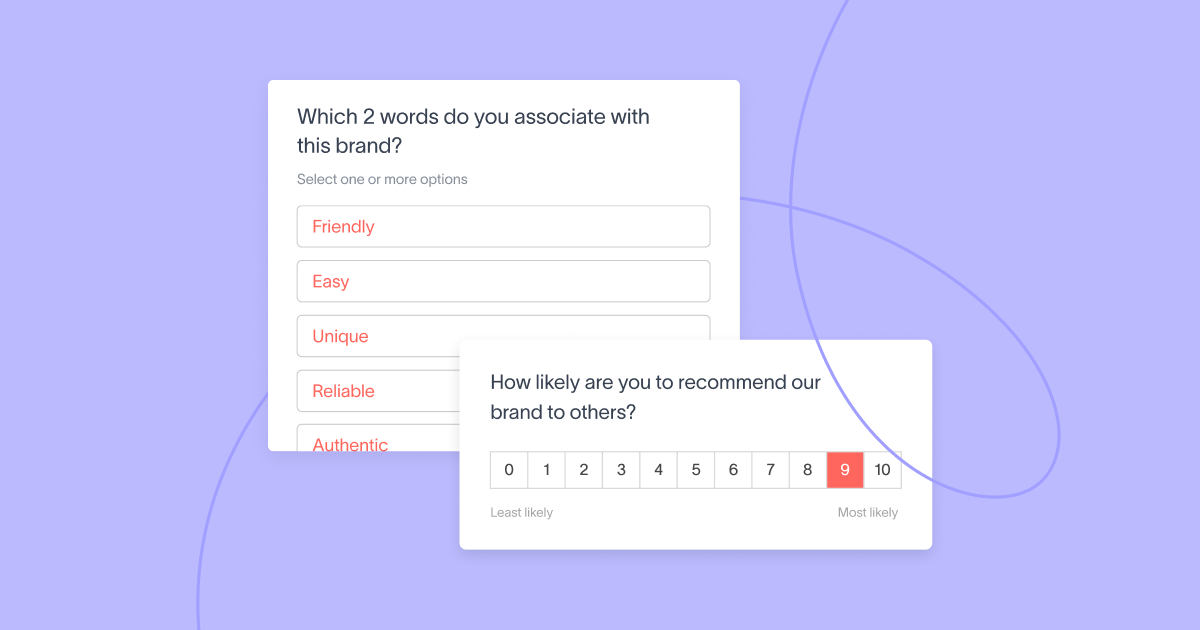This article was written by Benjamin Granger, Head of EX Advisory Services I Adjunct Faculty at the Qualtrics XM Institute.
Internal surveys are one of the most effective ways to understand employee attitudes, beliefs, and feelings.
That’s why it’s critical to understand the structure of an impactful survey and how to recreate it for your organization.
Relational vs. transactional employee surveys
Before we dive into the anatomy of a survey, let’s discuss the key difference between two types of surveys: relational vs transactional.
- Relational surveys measure one’s relatively stable attitudes about their work, the organization, and specific aspects of their work (i.e. their relationship with their manager, pay and benefits, and professional growth opportunities).
- Transactional surveys measure one’s perceptions of specific interactions that they have at work (i.e. going through a training course, applying for an internal role, or submitting an IT ticket).
We recommend starting with a simple, relational survey (such as an eNPS survey), for organizations new to surveying.
Once the organization becomes accustomed to surveying, it should gradually expand its Employee Experience (EX) Management Program and begin to trigger transactional surveys at meaningful moments across the employee journey – starting with the most resource-intensive and impactful experiences, like hiring and onboarding.
3 tips for effectively surveying your employees
Regardless of whether a survey is relational or transactional, organizational surveys have similar anatomy and contain three main components: an outcome metric, driver items, and open-ended questions.
1. Anchor the survey on an outcome metric
Every employee survey should have at least one outcome metric.
An outcome metric is an overall measurement of the employee’s experience and should communicate whether the experience you are measuring was good or bad.
For example, in a relational engagement survey, the outcome metric would be employee engagement. In a transactional post-onboarding survey, the outcome metric might be an overall rating of employees’ satisfaction with the onboarding experience.
2. Take action on feedback with driver items
It’s very common for organizations to hyperfocus on outcome metrics. In fact, some organizations deploy surveys that only include outcome metrics. In our view, this is misguided.
The ultimate purpose of any survey for employees should be to take action on the feedback. Because of this, the most important component of any survey is the driver items!
Driver items measure specific aspects of the employee experience that led it to be good or bad. The drivers tell you why employees feel the way that they do and what the organization and its leaders can do to improve those experiences.
In an employee engagement survey some drivers can appear as survey questions:
- “I have the authority I need to do my job” Driver: Authority & Empowerment
- “I have access to the resources (e.g., materials, equipment, technology, etc.) I need to do my job effectively.” Driver: Resources
- “I can share my opinions openly without fear of retaliation” Driver: Psychological Safety
For transactional surveys seeking candidate or new hire feedback, for example, the drivers would include specific aspects of the experience such as timeliness, quality and frequency of communication, and the simplicity of the systems used.
3. Let employees express how they feel with open-ended questions
The final tip for effectively surveying your organization is asking open-ended questions.
Open-ended questions are measurements of additional information employees choose to provide about their experience. These items capture valuable information that the organization cannot gather through standard survey items.
There are few reasons why open-ended questions are important.
- Firstly, they are great for getting audience-specific suggestions about how to fix or improve an experience.
- Open-ended questions are also effective at trying to identify what aspects of the experience the organization didn’t think about or consider.
- And finally, open-ended questions give employees an opportunity to drive the conversation!
In an employee engagement survey, for example, some effective open-ended questions can include:
- For respondents responding negatively to a certain driver item, follow up with – “We are sorry to hear that you feel this way and are committed to improving your experience! What could we be doing better?”
- You can also ask for more detailed feedback – “Can you share any specific suggestions for how we can improve your experience working at <company name>?”
Think about it this way – in any good interpersonal relationship that you have with another person, the communication goes both ways, right? Sometimes you drive the conversation and sometimes the other person drives it.
The same goes for an employee-organization relationship. It’s critical that we let employees drive the conversation sometimes – one-sided conversations don’t make for very good long-term relationships!
Conclusion
In a way, surveys are sort of like gym memberships, you have to “show up” and take action in order to see results.
While outcome metrics are often what senior stakeholders focus on, the most important components of any survey are the drivers and the open-ended questions, because they tell you exactly what you can improve and act on.
About Benjamin Granger
Benjamin Granger, Ph.D., XMP, is the Head of EX Advisory Services I Adjunct Faculty at Qualtrics. He has over a decade of experience building Experience Management (XM) programs across the globe and leads research initiatives within the Qualtrics XM Institute.
About the XM Institute
The Experience Management (XM) Institute is the research and thought leadership arm of Qualtrics. The XMI is responsible for developing practical thought leadership around the discipline of XM and building a global community of XM professionals.







